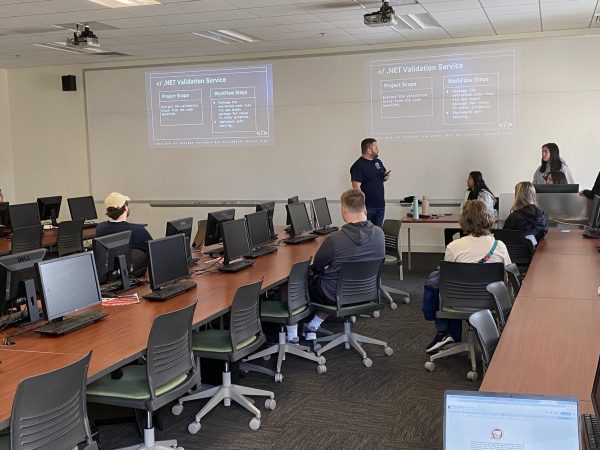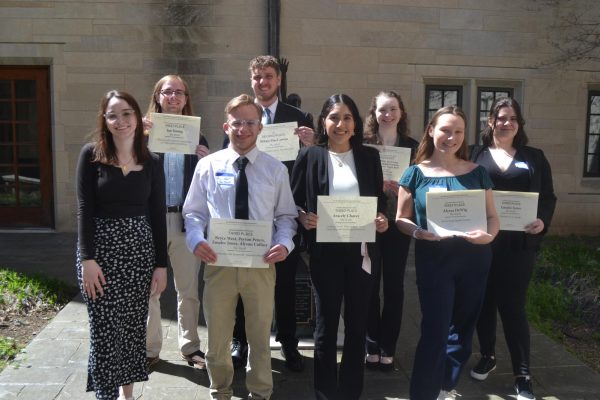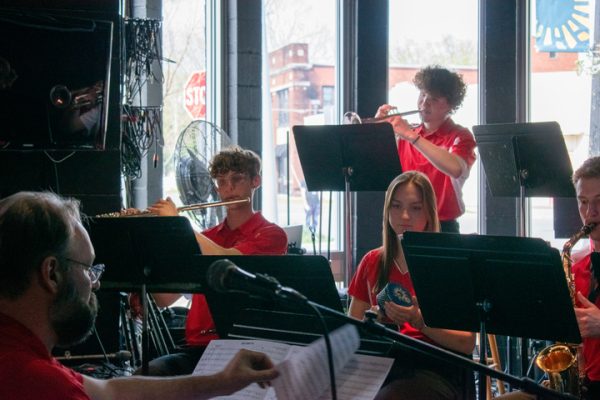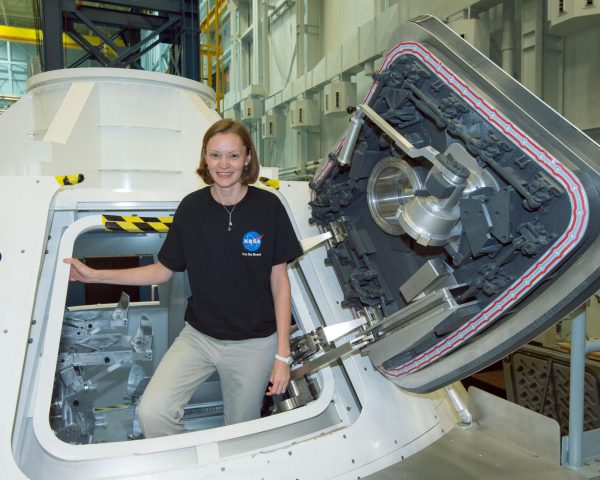‘Blaze the trail’
Bryan Mitchell said he needs sleep after helping design USI’s first-ever miniaturized satellite.
Mitchell, a junior mechanical engineering major, is in charge of the power subsystem, which generates power throughout the satellite, also known as CubeSat. The official satellite name is the Undergraduate Nano Ionospheric Temperature Explorer (UNITE).
The team consists of engineering students with mechanical and electrical backgrounds and three physics students. There are currently 11 member working on the CubeSat project.
The team is divided into three categories: spacecraft, instrumentation, and ground support equipment.
There are 13 total subsystems with cooperation between them.
“It’s a wonderful opportunity,” he said. “It’s something that you dream about. It’s not an opportunity that just jumps on you at every single moment.”
Mitchell said he wasn’t a part of the original start-up team, but joined it immediately after he received an email over the summer.
“This is always something I’ve always wanted to try,” he said.
The project officially began Aug. 23 after the team was assembled and is expected to be finished no later than 18 months from the official start date, being ready to launch into orbit by early 2018 at the latest. Mitchell said, however, they would like to have the satellite finished and sent to NASA by December of 2017.
Once the satellite is completed, the UNITE team plans to send it to NASA who will then either send it as a cargo mission to the international space station for deployment or send it as a secondary payload on a commercial launch vehicle.
The objectives of the CubeSat are to conduct space weather measurements in the lower ionosphere with a plasma probe, measure exterior and interior temperatures of the spacecraft and track orbital decay.
Mitchell said there have been problems along the way including a high-altitude balloon test flight.
“It didn’t go entirely according to plan, but we always learn from our experiences,” he said. “There are bound to be errors or unfortunate circumstances going forward”
He said there is $10,000 of funds allocated from the budget for various problems during design and fabrication.
The project is funded by a $200,000 grant from NASA’s Undergraduate Student Instrument Project (USIP). The USIP grant requires that all members of the team are undergraduates and the team be multidisciplinary, which means it cannot be composed of just one set of majors.
Senior engineering major John Siepierski said they have received smaller grants from the Indiana Space Grant Consortium and the university endeavor grant to help fund the GPS system, which they added to the CubeSat.
“The purpose of it is to fund projects that will first of all give undergraduate students some hands-on project experience for an actual science mission with real flight hardware,” Siepierski said. “I guess you can say that the general objective of USIP is to develop a workforce that can be prepared to enter the aerospace industry after graduation.”
Siepierski said two similar CubeSat missions have been conducted in the ionosphere, but theirs is different because they are taking plasma measurements below 400 kilometers and during solar minimum.
Solar minimum is lowest period of solar activity in the 11-year cycle of the sun. Siepierski said he expects significant differences in data compared to the CubeSats that traveled in solar maximum.
“There’s never been anything quite like this at USI before and so it’s also exciting to blaze the trail of bringing this sort of project to USI,” he said. “To be able to work on an actual space mission with real scientific contributions even before I graduate from undergrad is really fortunate for me.”
Siepierski said he attended a small satellite conference in Logan, Utah over the summer before the team began work on the CubeSat.
“It was a great experience just to get a feel for the industry and get advice from CubeSat teams that have been doing this for a while now,” he said.
Siepierski, the current team leader, said the team meets formally four hours every week in regularly scheduled class time Tuesdays and Thursdays. They also meet outside of class in informal settings, sometimes for eight or nine hours at a time.
“As team leader, I have been directing the efforts of each subsystem team, implementing system engineering tools and techniques, ensuring appropriate documentation, configuration management, and I was also the thermal engineer for the project,” he said. “I developed the preliminary thermal model and I’m going to be passing that off to our next thermal engineer.”
The UNITE team just recently completed their concept design review Nov. 17, which demonstrates to NASA that the project is feasible, reasonable and they identified various risks and appropriate mitigation strategies.
The next deadline for the team is Feb. 24, when the preliminary design review is due. That review is a more detailed design with finalized selections of hardware and more developed software. This will be the first time the team works with the actual hardware.
Siepierski said the CubeSat will launch into orbit anywhere between 325 and 425 kilometers. The height of the orbit will affect the orbit time as Siepierski said at 425 kilometers, the orbit could take as long as a year, while if the satellite is launched at 325 kilometers, it could take only 80 days.
“Ideally we would like to be deployed pretty close to our mission region because we don’t want to have a situation where the spacecraft has been deployed but by the time we actually start doing science, a lot of the people will already be graduated,” he said.
Siepierski said he is excited about the future of the project even though he will not be able to directly work on it after he graduates at the end of the semester.
“This project has definitely been one of the most valuable learning experiences of my entire education,” he said. “We have a really great team of really smart and motivated people and it’s been an absolute pleasure to work with those guys and learn alongside them.”










